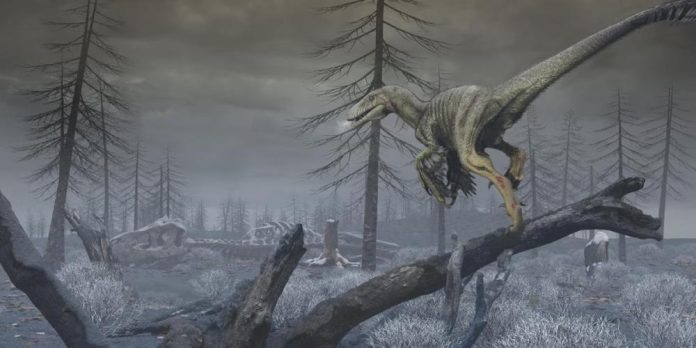VUB researchers have unveiled the pivotal role played by fine dust from pulverized rock, stemming from the impact of the Chicxulub meteorite 66 million years ago, in the mass extinction event that led to the demise of the dinosaurs. The precise mechanisms surrounding the dinosaur extinction have long been ambiguous, with previous theories emphasizing sulfur emissions, soot, and wildfires as the primary triggers for a “nuclear winter”. However, a recent study by VUB, detailed in Nature Geoscience, sheds new light on this catastrophic event.
Pim Kaskes, Steven Goderis, and Philippe Claeys of VUB’s Archaeology, Environmental Changes & Geo-Chemistry (AMGC) researched the grain size of dust particles, revealing a finer distribution than previously considered, indicating the settling of fine dust linked to the meteorite’s impact.
Further investigations by Cem Berk Senel, Orkun Temel, and Özgür Karatekin from the Royal Observatory of Belgium developed a new paleoclimate model to simulate the post-impact climate, unveiling that micrometric silicate dust remained in the atmosphere for up to 15 years after the impact, resulting in a global cooling of the Earth’s surface by up to 15°C. This aligns with the recent discovery of iridium-rich clay layers in the Chicxulub crater, attributed to the settling of meteoritic dust over a 20-year period.
The study also revealed that the particulate matter obstructed solar radiation, halting photosynthesis for nearly two years. The consequent harsh conditions led to mass extinction, particularly affecting plants and animals ill-equipped to endure prolonged darkness and cold. Johan Vellekoop notes that species capable of entering a dormant phase or adapting to generalist lifestyles fared better.
Özgür Karatekin highlights the significance of smaller asteroids, more prevalent in the solar system, which, although causing regional devastation, are more common than larger ones that could potentially cause mass extinctions.
The European Space Agency’s Hera mission, involving researchers from ROB and VUB, aims to offer insight into asteroid geophysics and impact processes. This research underscores the critical importance of understanding and potentially mitigating the impact of asteroids, reinforcing the significance of ongoing space exploration initiatives.















